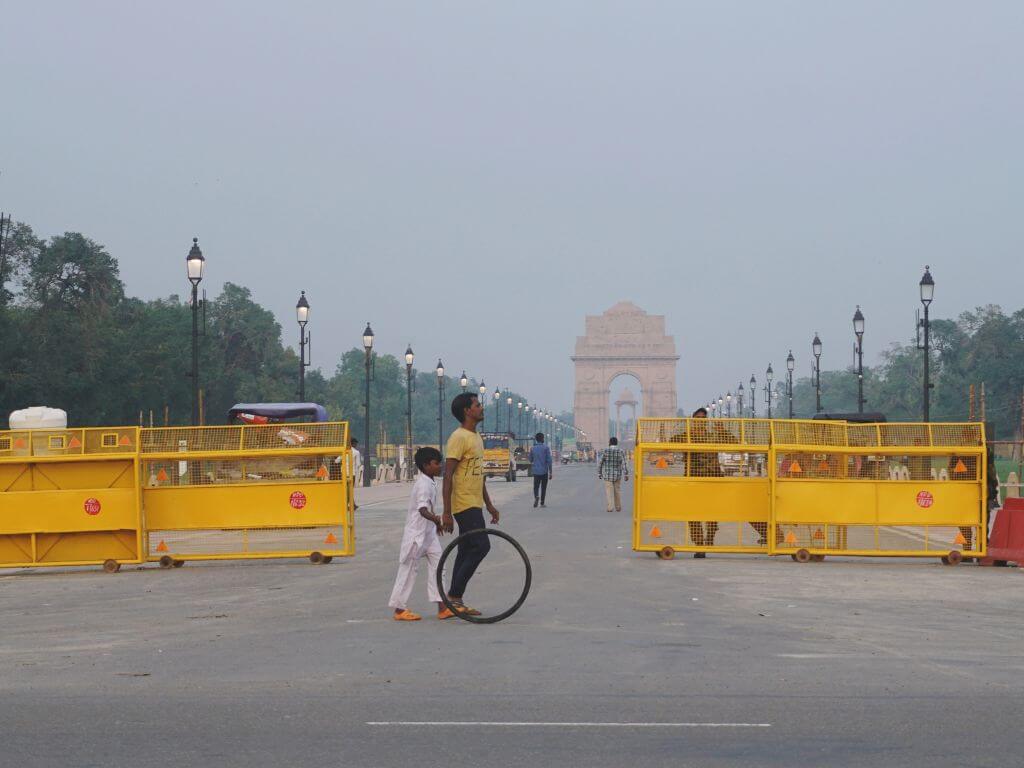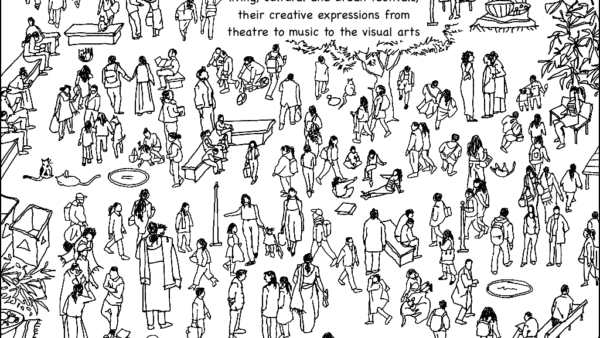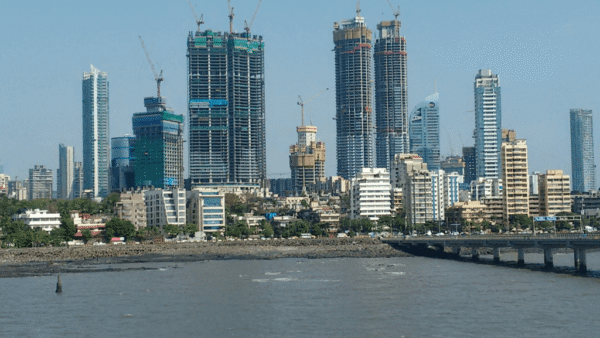It has been two years since Prime Minister Narendra Modi inaugurated the Kartavya Path as part of the grand Central Vista project erasing the Rajpath of the colonial era. Kartavya Path means the ‘path of duty’ but this space in India’s national capital, New Delhi, has invoked duty without the corresponding rights such as the Right to the City in the sense of people participating in the making and remaking of the city through protest, confrontation, negotiation, and action. This should have been the boulevard of the people, by the people, and for the people but it wears an eerie stillness.
About 2.5 kilometres away via Ashoka Road lies the 300-year-old observatory, one of <>five built by Maharaja Jai Singh II, with a fascinating array of instruments such as the Samrat Yantra, Jaya Prakash Yantra, Rama Yantra and the Misra Yantra. It has been a heritage precinct for years but, in the past two-and-half decades or so, Jantar Mantar has been reimagined by people from across India as a site of protest, action, confrontation, and negotiation with power. From agitating wrestlers last year to farmers, students, doctors, politicians, anti-corruption activists and others, hundreds of causes have been articulated at this heritage observatory and archaeological site.
Similarly, the Ramlila Ground which was turned into a protest site after the National Green Tribunal discouraged agitations at Jantar Mantar. It too was not made for this purpose but also claimed by people when popular protest venues like the Boat Club, nearest of the three to the Parliament, was made out of bounds for protests.[1] It is, at once, fascinating and instructive to observe how people break the barriers of planned and well-appointed spaces – planned by officials with hardly any public consultation – to reimagine these spaces in ways that allow them to articulate their concerns and assert their rights only a short distance away from the seat of democratic power.
In doing so, repeatedly and often at great cost to their lives and limbs, people seem to tell power: You can create spaces as you want but we, the people, will determine how we claim them and use them, we have rights here. And, just like that, break barriers that did not even seem to be there.
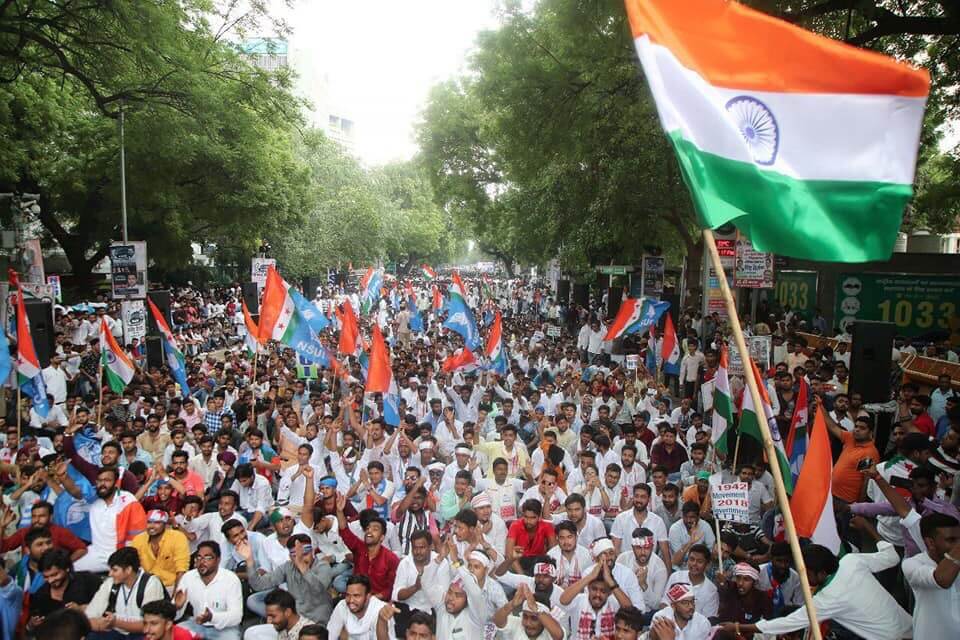
Photo: Wikimedia Commons
Spatial ordering and pushback
When the Kartavya Path was redeveloped and renamed, designated vending zones were marked around the area which was necessary in a city with millions of vendors. Yet, the exact location of the zones and licensed access to them remains a challenge, as street vendors have learned. The zoning, to keep the Kartavya Path sanitised, meant that they have been confined to its periphery, near the parking areas and away from the public eye despite the well-accepted logic that street vendors need to be where people move about.
This spatial ordering has affected their opportunity to earn a decent living; they work in fear of being evicted or extorted by a slew of authorities, hiding their goods to avoid confiscation, navigating complex technocratic and administrative procedures to simply use the space. The State, with the spatial ordering, denies them the opportunity to participate and co-produce the city’s spaces even as it allows corporate-owned ice cream vendors here. Seeing street vendors live this precarious existence makes the Prime Minister’s words, spoken at the inauguration of the Kartavya Path, ring hollow: “Kingsway or Rajpath, the symbol of slavery, has become a matter of history today and erased forever. Today, a new history has been created in the form of Kartavya Path. I congratulate all the countrymen for their freedom from yet another identity of slavery.”
Street vendors at India Gate too face similar daily ordeal. Their practice of the space challenges the homogeneity of top-down planned commercial activities and corporate manufactured spaces. However, this issue goes beyond livelihood. It is about representation – who gets to represent whom, can people represent themselves as citizens – and access to public spaces for diverse people and practices. It is about preventing the urban fabric from becoming a sanitised, corporatised space.
Public spaces, by their very nature, resist being categorised by specific functions, identities, or typologies. This allows them to remain autonomous spatial realms, transformative for those who enter, use, and experience them, and flexible to be transformed into what people want them to be. In the process, they gain social, cultural, and political significance. The presence of a private security cordon around public spaces, such as Kartavya Path, is oppressive and a move towards people losing their autonomy.
The redevelopment of Kartavya Path meant walls being built towards the edge of the roads. These sandstone-clad half-walls with metal gates may seem like a mere design decision but the design is not without politics – the politics of exclusion and control. The walls harden the boundaries, transforming the Central Vista’s wide, open, and seamlessly flowing spaces into constrained high-security zones with fixed functions. The lawns at Central Vista, earlier, used to be filled with families, friends, tourists, and vendors. They are not seen, not encouraged, here as activities began to be compartmentalised for efficiency, aesthetics, and safety.
At what cost, whose cost? How do people break these barriers and begin to assert, once again, their Right to the City in one of the grandest boulevards of democratic India?
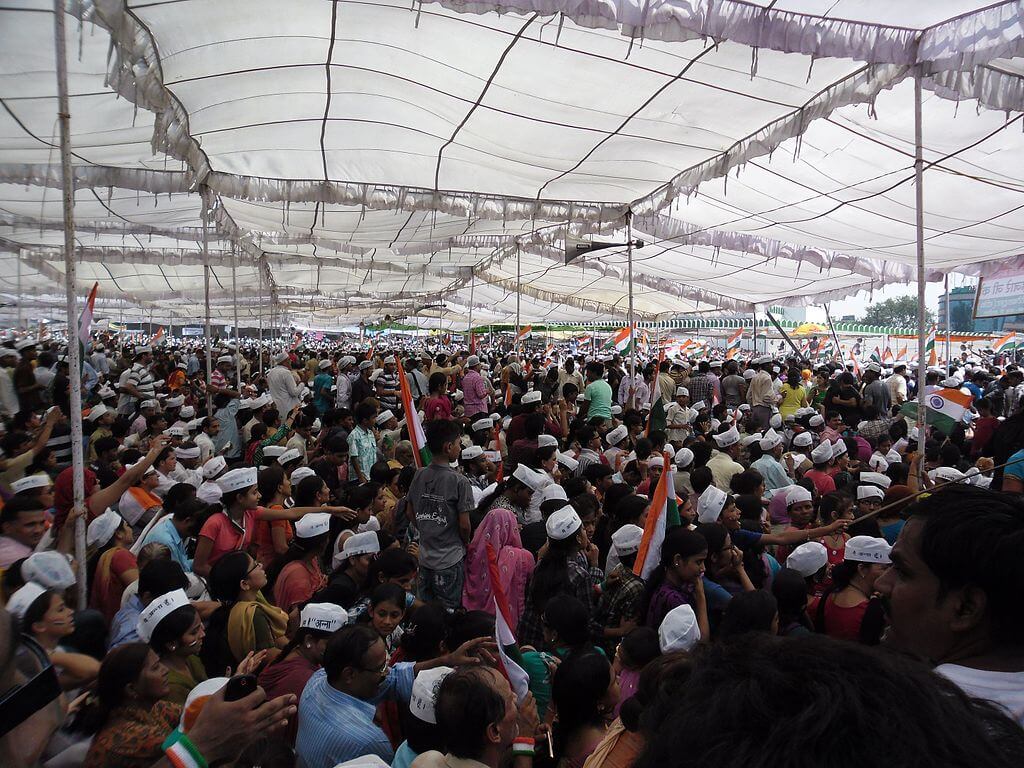
Photo: Hemant Banswal/Wikimedia Commons
People create, claim spaces
The concept of Right to the City was first introduced by French philosopher Henri Lefebvre in 1968, emphasising the use value of urban space over exchange value. In 2008, Marxist theorist David Harvey, referred to it as ‘both working slogan and political ideal’. Before Lefebvre, in 1961, Jurgen Habermas had defined public space as an in-between space between private life and the State. We can understand it as an in-between space where we construct the meaning of being citizens, in this case, urban citizens.
Protests, occupying public spaces, allow us the full meaning of what it means to be citizens although governments or authorities barricade spaces – remember the roads dug up and nailed during farmers’ protests? – to muffle people’s voices. Yet, people find creative ways out, reclaiming and reimagining other spaces to occupy and protest. Shaheen Bagh, out of consciousness for most movers and shakers in Delhi, was turned into a powerful protest site during the anti-CAA/NRC agitation, the roads leading into Delhi and its border with states were turned into temporary ‘cities’ by protesting farmers for well over a year, the wrestlers’ protests at Jantar Mantar brought the spotlight back to the well-used location.
Try as it might, the State cannot completely deny democratic citizenship through people’s assembly and access to public spaces. It is not a stretch to state that protest is a legitimate use of public space and its potential. International and regional human rights bodies, including the United Nations Human Rights Committee, have upheld the right to peaceful assembly.[2] Sometimes, as in Mumbai’s Powai, the denial is people-to-people and class-based where women of upscale Hiranandani Complex turned away slum women, whose basti was demolished weeks before, from joining their protest of the Kolkata rape-murder.
Delhi, the seat of India’s government, has seen new centres of dissent emerge breaking barriers that authorities laid down. After protests were stopped at the Boat Club by the then Congress government in 1988,[3] Jantar Mantar became a prominent location for demonstrations and, lately, the Ramlila Ground. Neither were intended for protests and, in a sense, may even be considered less suitable than the Boat Club with its direct view of the Parliament.
Protest sites that were not
The reimagining and reclamation of Jantar Mantar as a protest site started in 1993 broke certain barriers back then without any formal proclamation. The tree-lined avenue outside it, which links Tolstoy Road with Ashoka Road roundabout, was not subject to Section 144 of the erstwhile Indian Penal Code banning the assembly of more than five persons. Jantar Mantar, thus, turned into a ‘new’ square for public dissent.
When the British had prohibited protests in Delhi, the centre of political activity was Shahjahanabad; the meeting supporting the Salt Satyagraha in 1930 was held at Queen’s Gardens or Company Bagh here.[4] After Independence, large rallies were held at Parade Ground in Chandni Chowk, making it a hub of demonstrations for decades. The Red Fort was a popular protest location until the early 1970s when the narrative shifted during the 1971 war and India Gate, the memorial for the Unknown Soldier, became a protest site. The socialist Jayaprakash Narayan’s rallies in the 1970s were at Ramlila Ground and the Boat Club.
In 2018, the Supreme Court intervened to overturn the NGT ban on protests at Jantar Mantar. The age-old observatory and the road outside it have been the preferred hub of protestors for decades – they were not distant from the Parliament and other constitutional institutions but far enough for those in power to not be bothered by protestors. Jantar Mantar and its precinct lent a sense of history to whatever the cause being protested and propagated, allowed protestors the space to pause and ground themselves, offered shade to whoever wanted it, had room for more than one protest at a time with even small gatherings pitching their tents for days, and reminding passersby of the value of protests as part of citizenship in a democracy.
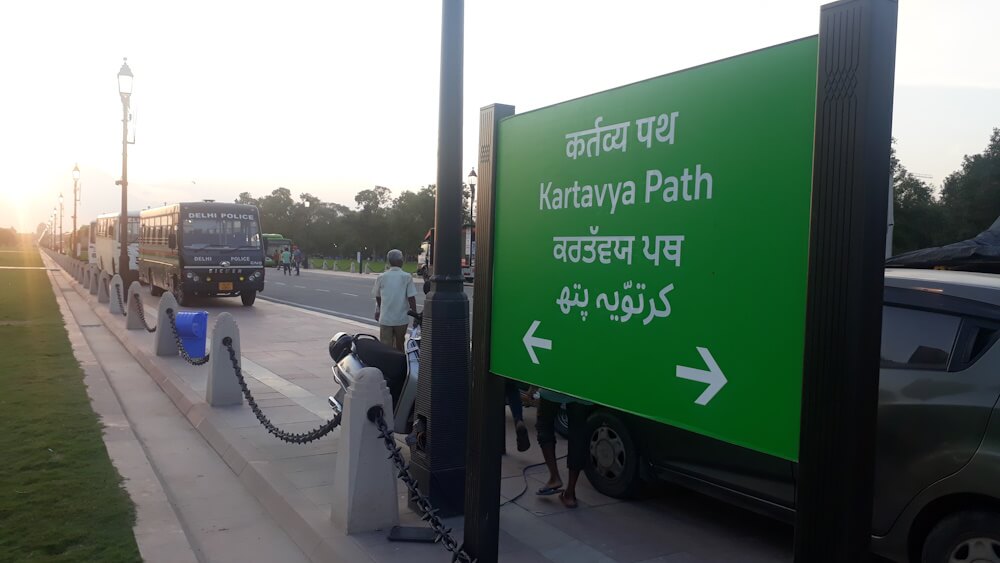
Photo: Pinakpani/ Wikimedia Commons
Jantar Mantar was certainly not imagined to be this way. It was transformed into a hub of protests as people reimagined the use of the space, reclaimed it to articulate their demands from power, and seamlessly broke barriers of planning and use of public spaces – use that Maharaja Jai Singh and his planners might not have imagined ever. However, increasingly, Jantar Mantar too is being made out of bounds for protestors, especially after wrestlers were dragged out last year and companies of policemen strutted about occupying it.
As Raj Shekhar from Right to Food remarked, “After the Shaheen Bagh protests and the pandemic, Jantar Mantar as a protest space was locked up by the Delhi police. After court cases, it was reopened. At Jantar Mantar, the street outside has become an important space for dissent. The street is always the site for dissent, all over.” Added Priya Darshini from Delhi Forum: “Post-Covid, there has been a serious crackdown on protests and ‘publicness’ of public spaces. At Jantar Mantar, which was claimed through numbers, people can’t even gather without police permission…Many movements across India used to travel to Delhi, especially during Parliament sessions, to register their protests at Jantar Mantar and Parliament Street but, lately, people are being detained at the railway station itself. This has become a major impediment to mobilisation. It is no longer just a law-and-order issue; engaging with the public realm itself is being penalised.”
<strong>This is where the Central Vista further undermines – its redevelopment shows that, even as people persist in breaking spatial barriers to protest, governments plan spaces to prevent or curb protests, to keep the public out. Increasingly, authorities want to confine political action to designated places, that too, with the permission of the police. But public protest is about raising awareness and building solidarities, and, therefore needs active public spaces to make an impact.
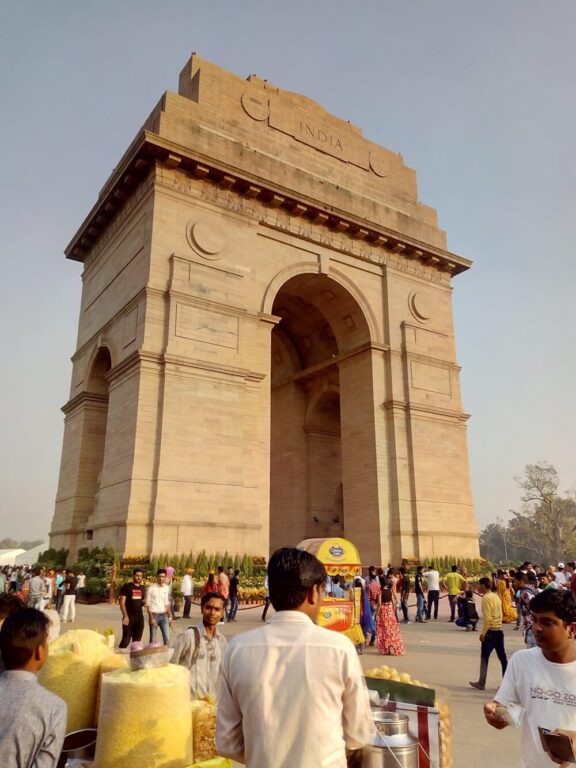
Photo: Wikimedia Commons
Public spaces are imagined heterotopias, to paraphrase historian Michel Foucault. Heterotopias, he explained, were “unique spaces…in contrast to utopias” or counter-sites that genuinely exist and “are integral to the very foundation of a society”. The exhibition PROTEST/ARCHITECTURE: Barricades, Camps, Superglue last year[5] explored the spatial aspects of protest cultures and the subsequent book, Protest Architecture, featured 16 case studies from around the world including farmers’ protests at Delhi’s borders.
By arguing that people have a common right to utilise city space, Lefebvre shifted the determinants of belonging from ownership and wealth to participation. This perspective changes our sense of belonging and using public spaces, breaking barriers literally and figuratively. In a democracy, public space is an ‘empty place’, not as empty as a vacuum but as a reservoir of potential and generative power that people bring to it.
Economist Elinor Ostrom’s insights in Governing the Commons[6] shows that the management of commons, or civic spaces, can surpass the outcomes of both private ownership and government control. This, as David Harvey points out, is a matter of action – particularly the reclaiming of civic space through aggressive and rebellious demonstrations, provocative performances, citizen action, street vending activities and even unsolicited gardening.
In every such instance, people consciously or unconsciously break the barriers imposed by the hierarchies of planning and governments.
Prachi Satrawal, architect, urban researcher, and journalist, is pursuing her MA in Arts and Aesthetics at Jawaharlal Nehru University. Her work centres on the Right to the City, urban agriculture, infrastructure, grassroots movements, and urban commons which she explored as a Research Associate at the People’s Resource Centre, a Delhi-based action research organisation. As a part of the Abohar History Project, she curated six community exhibitions in collaboration with historians, designers, and municipal officials to document the town’s history. Prachi was also a fellow at ‘People, Pandemic and a Place for Performance,’ led by Siddharth Singh and the India Foundation for the Arts.
Cover photo: Priyali Dhingra

